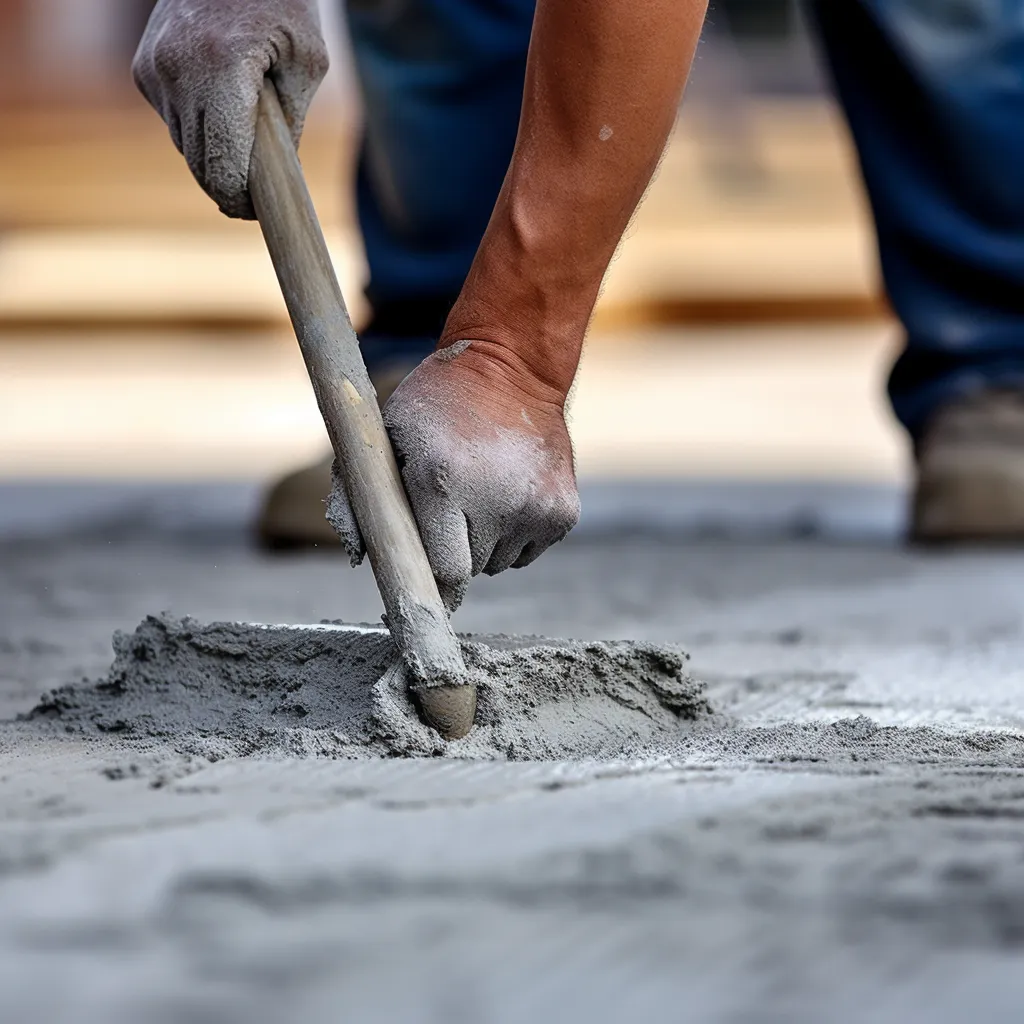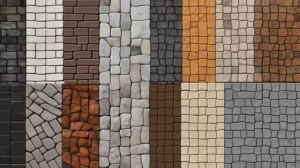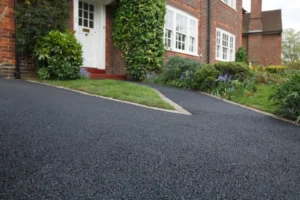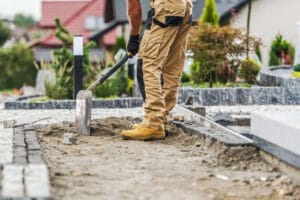Are you thinking about upgrading your driveway and pondering the feasibility of pouring concrete over existing asphalt? This question often arises among homeowners planning to enhance their driveways without the labor-intensive process and cost of complete asphalt removal.
This comprehensive guide is intended to illuminate the possibilities and methods of such an approach, providing clarity for those considering this unique renovation strategy.
Is Overlaying Concrete on Asphalt a Practical Approach?
Overlaying concrete on asphalt can be a practical approach in certain scenarios, however, it typically requires a proper evaluation based on the individual site conditions, as well as the expected loads and traffic of the project. Additionally, the existing asphalt should be structurally sound and in good condition to ensure proper bond and longevity of the concrete overlay. Overall, overlaying asphalt with concrete can be cost-effective and a time-efficient solution in cases where full-depth concrete replacement is not necessary.
How Well Does Concrete Adhere to Asphalt?
The answer depends on a few factors. First, the condition of the asphalt must be taken into consideration. If the asphalt is in poor condition or has a lot of loose material, it might not provide enough support for the concrete. In these cases, it’s best to remove and replace the existing asphalt first. On the other hand, if the asphalt is in good condition and there’s little to no loose material, then it should be able to provide a suitable foundation for the concrete.
Another factor that will determine how well concrete adheres to asphalt is what type of adhesive you use. There are various types of adhesives available on the market, each formulated to work on different surfaces. When selecting the right adhesive for your project, it’s important to choose one that is specifically designed for concrete-to-asphalt applications.
Is It Feasible to Overlay an Asphalt Driveway with Concrete?
Indeed, overlaying an asphalt driveway with concrete is feasible. This approach has its advantages, such as enhancing the driveway’s longevity and aesthetics, but it’s crucial to ensure the asphalt’s proper condition before undertaking this project.
Overlaying an asphalt driveway with concrete is certainly possible, and can provide a number of benefits. When properly installed over an asphalt surface that is in good condition, concrete can significantly extend the life of the pavement, as well as improve its appearance. Furthermore, a concrete overlay will provide added strength to the underlying asphalt and provide superior protection from wear and tear, weathering, and normal deterioration.
When Is It Inadvisable to Overlay Concrete on Asphalt?
Though advantageous, overlaying concrete isn’t always the ideal solution. If the asphalt is severely damaged or deteriorating, it might not provide a reliable base for the concrete. In such instances, removing and replacing the old asphalt may be a better approach.
Pouring concrete over existing asphalt can be an efficient and cost-effective way to cover a damaged surface, but it isn’t always the best choice. Before starting any such project, it is important to assess the condition of the existing asphalt structure. If it is deteriorating or has suffered severe damage, overlaying may not provide a solid enough foundation for the concrete. In this case, removing and replacing
Can Concrete Be Used to Fill Asphalt Cracks?
Although filling asphalt cracks with concrete is possible, it’s typically not recommended due to differences in material properties such as flexibility and thermal expansion. Consider using a rubberized asphalt-emulsion crack filler designed specifically for asphalt driveways.
Pouring concrete over existing asphalt is not recommended for many reasons. The main reason is the differences in material properties between concrete and asphalt. Asphalt is a flexible material, while concrete is rigid and inflexible. When temperatures fluctuate, as they are known to do in many climates, the asphalt will expand or contract to accommodate the temperature change whereas concrete will remain unchanged. This can cause major cracking and/or damage to the concrete layer, which may then require costly repairs.
Additionally, asphalt is thinner than concrete, meaning that more layers of asphalt need to be laid to achieve the same level of stability as a single layer of concrete. Therefore, pouring a new concrete layer will only make matters worse by adding extra thickness and weight on top of an already weakened layer. Asphalt remains the better choice for regions with frequent fluctuations in temperature and for those looking to quickly repair their driveway or pavement.
Steps to Layer Concrete Over Asphalt
For homeowners considering this project, the following step-by-step guide can be followed:
Preparing the Existing Asphalt
Before any new layer of concrete can be added, the existing asphalt must be thoroughly prepared to ensure a durable, long-lasting surface. You’ll need to start by cleaning the surface to remove dirt, dust, and debris. Then, fill in any gaps or cracks with a patching material.
After that, you’ll want to compact the surface with a roller to make sure it’s solid and secure. Finally, you should apply a sealant to protect the asphalt from water damage and wear and tear.
Once the existing asphalt is prepped, you can start the process of pouring the concrete. It’s important to use the right materials and techniques to ensure the concrete is properly mixed and spread to create a level, even surface.
Applying a Bonding Agent

You must apply the bonding agent with extreme care as if you’re gluing a piece of glass together – it’s THAT important!
Applying a bonding agent before laying concrete over existing asphalt is essential to ensure a solid bond between the two materials. It’s important to use a bonding agent that is specifically designed for this purpose, as not all agents are suitable for concrete and asphalt adhesion.
The preparation is key to ensure a successful application, and the bonding agent should be applied in two layers. First, apply the bonding agent to the asphalt in a uniform coat, using a trowel or brush. Be sure to remove any debris or dirt from the asphalt surface.
Once the first layer has been applied, allow the bonding agent to dry before applying the second layer. The second layer should be applied with a more generous amount of bonding agent and should be spread evenly with a roller.
Allow the bonding agent to fully dry before pouring the concrete.
Mixing and Pouring the Concrete
After the bonding agent has been applied and dried, it’s time to mix and lay down the concrete to make a strong, long-lasting foundation.
To get started, mix concrete in a wheelbarrow with a spade or hoe according to the manufacturer’s instructions. It’s important to ensure the concrete is completely mixed before pouring.
After this is done, shovel the concrete onto the asphalt and spread it with a rake, making sure it is evenly distributed.
Once the concrete is laid down, it’s time to smooth it out with a trowel. Make sure to fill in any holes or uneven spots, and use a bull float to create a slightly sloped surface. Finally, use a hand float to finish the job and create a smooth surface.
Here are some tips to keep in mind when mixing and pouring concrete:
- Always wear protective gear when working with concrete.
- Make sure to mix the concrete thoroughly before pouring.
- Use the appropriate tools to ensure a smooth, even surface.
- Allow the concrete to dry completely before walking on it.
Finishing the Concrete

Once the concrete is laid, it’s time to make it look perfect – don’t let the hard work go to waste!
Finishing the concrete is a detail-oriented process that requires experience and skill. Start by using a steel trowel to level and smooth the surface. Move the trowel in a circular motion to create a uniform, even surface.
Use a finishing broom to create a non-slip surface. Move the broom in a sweeping motion to create a uniform texture. If you want to add a decorative finish to the concrete, create a design with a groover tool that will leave an impression on the concrete surface. Use a steel float to fill up the grooves and smooth out the surface.
Finally, use a sealer to protect the concrete and give it a glossy finish. With the right technique, you can make the concrete surface look perfect.
Curing the Concrete
Now that the concrete’s been laid and finished, it’s time to cure it for maximum durability and strength.
Curing concrete is an essential step in the process of pouring concrete over existing asphalt to ensure that it has the strength and durability to last.
The curing process gives the concrete time to harden and reach its maximum strength.
It’s important to keep the concrete moist during the curing process in order to prevent it from cracking.
This can be done by covering the concrete with a plastic sheet, or by sprinkling it with water.
The curing time will depend on the size, thickness, and type of concrete, but it’s generally recommended to wait at least 28 days before putting any heavy load on the concrete.
During this time, you should also inspect the concrete regularly to make sure it’s curing properly.
With proper care and attention, the concrete should be strong and durable for years to come.
What Other Materials Can Be Used Over Asphalt?
Asphalt can be overlaid with several other materials, including asphalt sealer, an additional asphalt layer (commonly known as an overlay), or paving stones. Each has its pros and cons, warranting careful consideration.
When it comes to pouring concrete over existing asphalt, the pros and cons must be weighed carefully. On one hand, pouring concrete over asphalt is a quick and relatively inexpensive solution for resurfacing aged asphalt pavement. This approach also requires less preparation than other methods of resurfacing. On the other hand, this method can cause problems with water drainage. The concrete overlay will need to be sloped in
Conclusion
In conclusion, overlaying your existing asphalt driveway with concrete can be an efficient and cost-effective method for revitalizing your property’s exterior. Though it requires careful preparation and attention to detail, the end result can be both durable and aesthetically pleasing, adding value to your home. However, before making the decision to proceed with this project, it’s important to evaluate the condition of your current asphalt surface and consider the specific requirements and potential challenges that might arise. With the right planning and execution, a concrete overlay can breathe new life into an old asphalt driveway.



